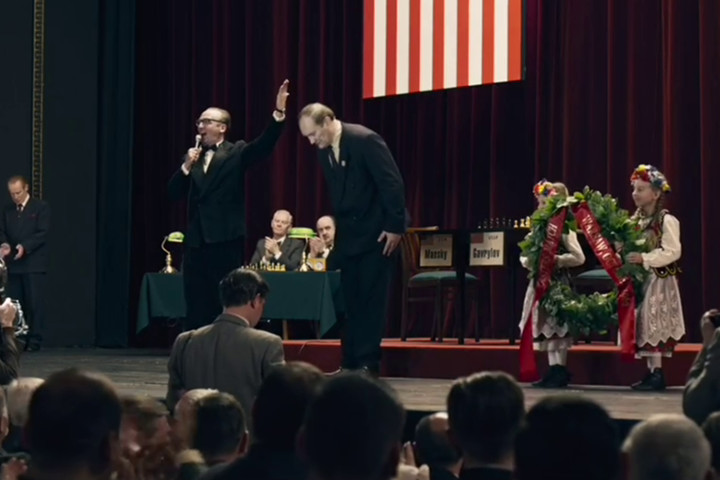


American actor Bill Pullman is probably most famous for playing the President of the United States of America and entering an F/A -18 Hornet jet to blast up a hostile alien race. At least this is how many people remember him from the movie Independence Day (1996) by Roland Emmerich. This movie deserves its own blog post here sooner or later.
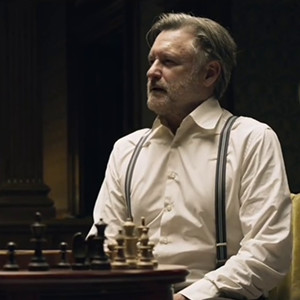
In 'The Coldest Game' (2019), a Netflix original which debuted in February, Pullman stars as the fictional character Joshua Mansky from the USA. He is a genius mathematician who is so smart, that he needs alcohol to slow down his brain activity and uses this trick pretty often throughout the movie. The struggles of a brilliant mind, right?
At the height of the Cold War, Mansky gets kidnapped by the US Secret Service and is forced to play a match against the Soviet Grandmaster Alexander Gavrylov. The match takes place in Warsaw — it is a Polish movie written and produced by Łukasz Kośmicki. While fighting at the board Mansky also gets involved in espionage, trying to stop a global nuclear war. At the end of the movie we see some interesting plot twists, but nothing will be spoilered here – except the chess games.
Fictional matches between players from the Soviet Union and the USA of course always evoke memories of the match between Robert Fischer and Boris Spassky in Reykjavik 1972 — much more so if such a fictional match takes place in the time of the Cold War. However, the characters in "The Coldest Game" at best only fleetingly resemble Fischer and Spassky. The "Chess Masters Match Warsaw" — as the tournament is called in the movie — goes over five games, a rather unusual (to say the least) and definitely fictional number of games for World Championship matches.
But the chess games portrayed in the film are mirroring real, famous games — a treat for chess-loving viewers!
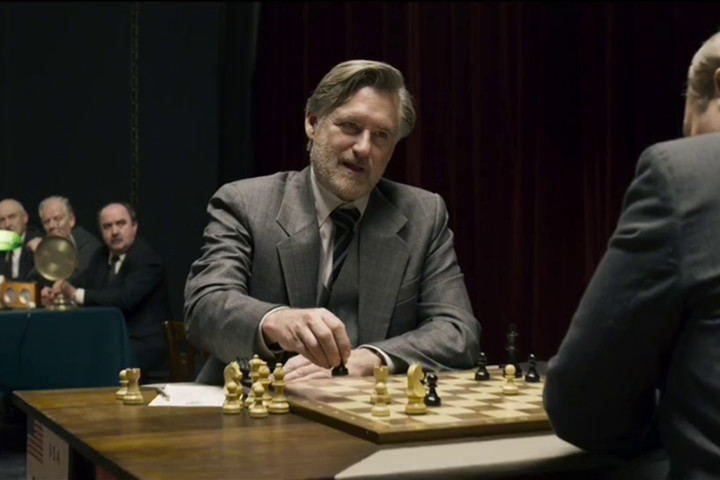
Bill Pullman as 'Joshua Mansky'
The first game between Mansky and Gavrylov alludes to a famous game between Ortueta and Sanz that has a long history and might have been played at the Championship of Castile in Madrid 1933 but also might be a hoax as Tim Krabbé reveals on his website about Chess Curiosities.
Interestingly enough, an almost identical position occurred two years earlier in a game Tylkowski versus Antoni Wojciechowski in the Poznan City Championship (1931) in Poland.
This is the exact copy of the position in the movie. Credit to the filmmakers for using this position as it contains a nice Easter egg.
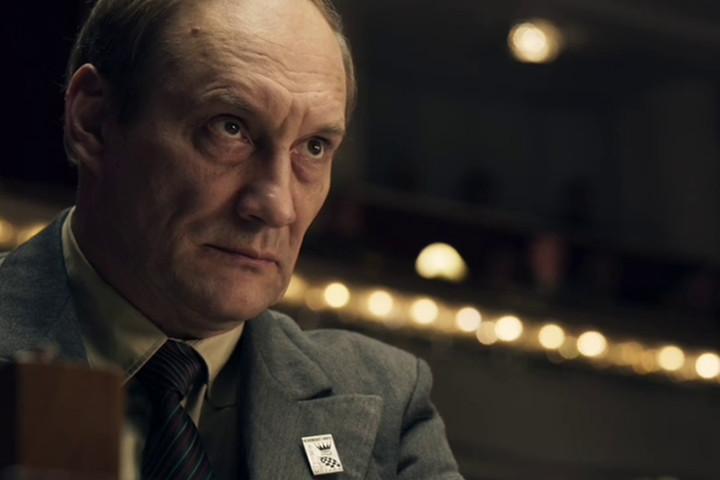
Evgeniy Sidikhin as 'Alexander Gavrylov'
In the second game we see a very quick victory by the Soviet Grandmaster and an imitation of a game between Vsevolod Rauzer and Alexander Ilyin-Genevsky from 1937.
Joshua Mansky begins to make mistakes in this game because of a hypnotic distraction from the audience. This part is covered in the analysis below.
This might sound far-fetched but hypnosis or the belief in the power of hypnosis has played a role in a surprisingly large number of chess events as Edward Winter knows.
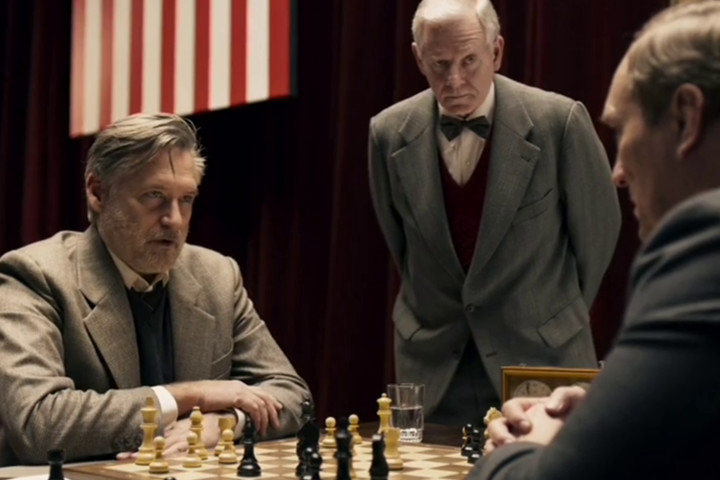
The last game shown in the movie ends in a draw and was inspired by a game between Efim Geller vs Mikhail Tal from 1976.
This game was the last of the match and it doesn't happen too often that films with elements of chess care so much about the quality of the games.
The last move by Manksy leads Gavrylov to stand up and applaud him together with the audience. This is another Easter egg and alludes to the famous sixth game between Fischer and Spassky in Reykjavik 1972 in which Fischer's play left a strong impression on Spassky and the audience.
In Bobby Fischer Goes to War (2003) Edmonds and Eidinow describe the scene:
The packed auditorium rose as one; a bemused, crushed Spassky joined in the applause, clapping for his opponent in recognition of the artistic creation to which he had fallen victim.
No wonder such a dramatic moment continues to provide inspiration to filmmakers.
Movie rating: 5/10
Chess rating: 8/10
I personally didn’t enjoy the movie too much, but the chess games caught my interest and are enjoyable to watch, even if they are sometimes odd to watch, e.g. when you note that the clock due to cinematic reasons is always on the same side of the board. However, I think despite these oddities chess players might be interested to see the good and the bad chess moments in the movie and might want to give it a try.
See: The coldest game (Netflix)
| Advertising |